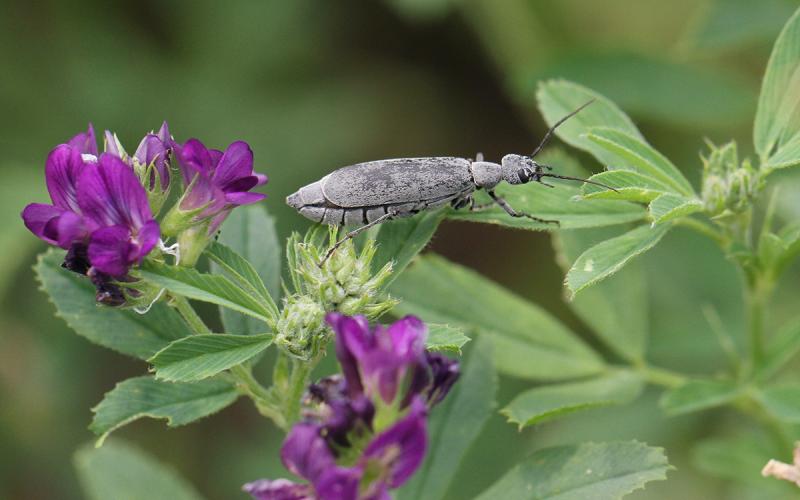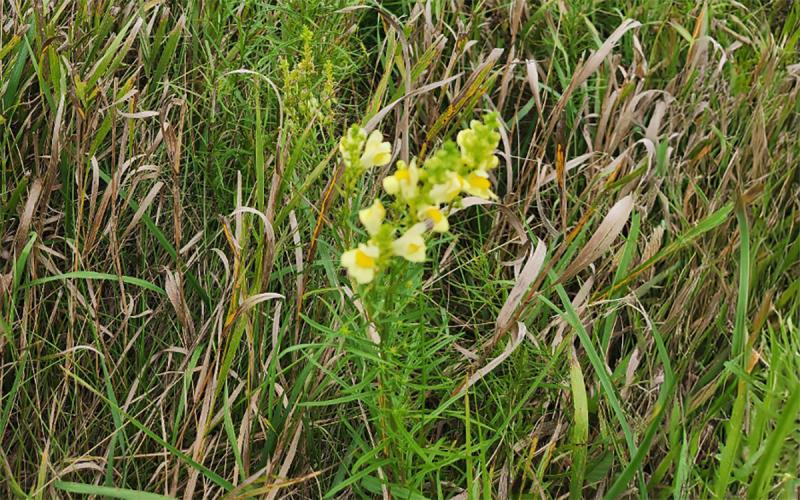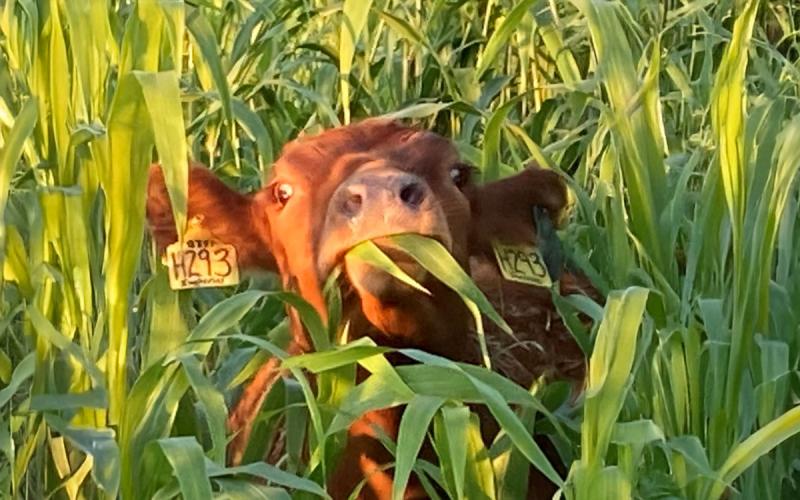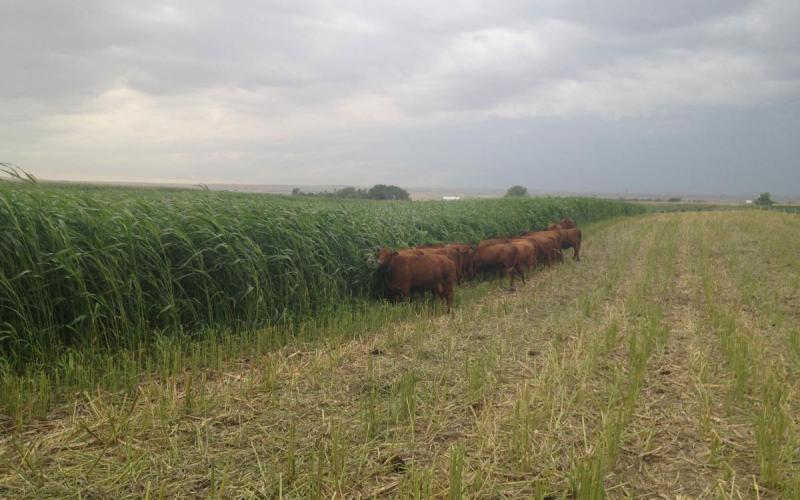
Written collaboratively by Patrick Wagner, Adam Varenhorst, Philip Rozeboom, Sara Bauder, and Bradley McManus.
The frequent rain events experienced across much of South Dakota this summer has helped boost forage production. That means alfalfa growers are harvesting second and later cuttings, even in areas that often get only one cutting per season. Although this is great for production, the possibility of encountering blister beetles at harvest increases later in the summer. Adult blister beetles feed on leaves and blossoms and contain a toxic chemical called cantharidin. This chemical poses a health threat to livestock that consume alfalfa bales containing whole or partial blister beetle bodies. Due to increasing blister beetle activity, alfalfa fields should be monitored prior to harvest for the remainder of the growing season.
Identification
Blister beetles have one generation per year. Adults can be up to 1-inch long; have a soft, elongate body; and vary in color and size based on species. The most-common species that is found in early summer is the ashgray blister beetle (Figure 1). Other common species in South Dakota that show up later in the season include the black (Figure 2), immaculate (Figure 3), striped (Figure 4), margined (Figure 5), and spotted blister beetles (Figures 6). A unique characteristic of blister beetles is that their thorax (middle body segment) is narrower than both the head and abdomen.
Ashgray

Black

Immaculate

Striped

Margined

Spotted

Toxicity
Blister beetles get their name because their blood contains cantharidin, which causes blisters if it comes in contact with skin. The beetles release this toxic chemical through “reactive bleeding” to defend themselves from predators. Cantharidin is also released if the beetles are crushed, which is a problem when feeding infested hay to livestock. If an animal ingests enough blister beetles, it can lead to mouth sores, digestive issues, kidney damage, and, in severe cases, death.
Management
It is important to scout alfalfa fields for blister beetles prior to each cutting. Second and later cuttings are at higher risk of infestation because blister beetles are more abundant by mid-summer. Due to their predation on grasshopper eggs as larvae, blister beetles are more likely to be present in areas where large grasshopper populations were observed during the previous year.
Insecticide applications are not recommended, as it kills the beetles but does not remove them from the hay. Dead blister beetles remain toxic, and spraying may increase the number of beetles per bale.
The alternative is to cut alfalfa prior to peak bloom, as blister beetles are attracted to the blossoms. The cut alfalfa should be allowed to dry fully before raking, so that the beetles have time to vacate the plants prior to baling. If alfalfa is infested, it is also important to mow or windrow the hay and not crimp it. Crimping increases the likelihood of crushed beetles remaining in the hay. From personal observations, many blister beetles will escape from mowed alfalfa within the first 3 to 6 hours.
When selling hay, ensure that blister beetles aren’t present, or notify the buyer of any infested bales. Horses have a particularly high sensitivity to cantharidin, so it is important that they don’t consume infested hay. In addition, avoid feeding hay from field edges to horses, because blister beetle numbers are typically highest in those areas.


